Morning back pain is a bear. Your whole night revolves around how much pain you’re going to be in first thing in the morning.
You wake up only to take a deep breath before kicking your legs over the side of the bed and trying your best not to upset your already pissed off lower back. For you, getting out of bed is more about momentum then technique and proper mechanics. That stuff is for the birds! All you can think about is once I am up how can I get through the rest of the morning without having to bend over!?
I dealt with severe morning back pain for a while until I started to implement these strange but powerful habits and sleeping arrangements.
When it comes to morning back pain you really need to dissect the situation and look at it from a few different angles. What I am going to go over in this article are some common myths about morning back pain, the reality of it and how you’re going to optimize your sleeping arrangement to produce the most pain-free morning as possible.
Listen up.
I know people tell you how awesome it is to feel like you’re sleeping on a cloud well let’s just get real for a second. Sleeping on a cloud isn’t practical and it sure as heck isn’t going to help you beat your morning back pain.
You see, it’s not about how squishy your mattress is when it comes to bringing you relief but how supportive the mattress is to a healthy spine position. We would all love to be able to sleep on a queen size mattress made of the softest and squishy material, but it just isn’t practical for some people.
I remember waking up with morning back pain over and over knowing it was coming from sleeping on my fairly new, “quality”, plush mattress. The mattress had a few years on it so the body indentions were pretty common. Even being normal size, the body indentions were enough put my lower back in a weird position all night so when I woke, the damaged area (L5-S1) would be super irritated and inflamed. Hurray, instant morning back pain, free of charge. This little personal story brings me to my first point and your first step in beating your morning back pain.
What typically causes morning back pain?
This happens for a number of reasons. One of the main culprits is actually an increase in hydration between the vertebrae. During the night this is when your body actually is able to relax and elongate. Since your spine is not weight-bearing it has room to stretch and fill with fluid. This is great for restorative purposes but bad for someone dealing with any kind of muscle spasms, inflammation or acute irritation.
Even though it is a positive reaction, the overhydrated discs will exaggerate any irritation that is already there which is why it is super important to stick to walking within the first hour of waking. You don’t want to go right from sleeping to sitting on a couch, reading or watching tv first thing in the am. Let alone be at the gym.
Although we can’t control the hydration of our discs we can help the position in which we sleep.
Morning back pain hack #1: Choose your mattress wisely.

That’s right.
No more super squishy or plush mattresses. Go for the support. It has never been truer than now. Buy the highest quality of mattress that you can afford. You can find mattresses online from places such as https://thedozyowl.co.uk/otty-mattress-review/ who provide you with reviews on a variety of mattresses, or I am sure you will have plenty of local shops who sell high-quality mattresses. You will spend roughly 229,961 hours in your lifetime sleeping which is about 33% of your life. That’s a lot of time to spend on something that is actually making the rest of your time awake suck.
When it comes to your mattress this is exactly what I did to bring more support and drastically reduce the amount of morning back pain I dealt with (I have only had the mattress for a couple of years so tossing it out and getting a better one wasn’t an option).
What is the highest quality?
Well, I am no mattress expert but things you want to look for are density of the material, layers of material and spring count. If you’re going with a memory foam mattress you can throw all this out but if you have a traditional spring mattress then the more springs the better. This will help reduce the sag over time. All beds sag but the cheaper ones will sag faster and deeper. Since you already know the bed will have SOME normal sag over time try to take into account this change when you make your purchase. The plush mattress was perfect as is but after a year or two the material took on that natural sag and that’s where it all went south.
This is the trick.
I should have purchased a firm mattress. It would have been just fine brand new but probably even better after the material was broken in.
Think about. You buy a plush mattress and out of the box it’s perfect but once it gets broken in it still may be plush but it loses the support that you originally fell in love with.
If you’re already in the market for a new mattress and you have the coin to drop, my experience with the TempurPedic topper (I will fill you in on this next) has been great. I can imagine having a full-blown Tempurpedic mattress must be amazing! Be sure to try the mattress out before walking out of the store. Get into the normal position that you would sleep in and see how it feels. You should be able to completely relax and feel if there is any irritation in your lower back. When mattress shopping get away from the salesman so you don’t have them awkwardly standing over you while you’re laying on the bed. Naturally, you will feel rushed and not want to really give the mattress a fair test. Don’t just hop on it and lay flat on your back. Lay the exact way you would lay in the bed. You will know shortly if it’s the right one for you.
Your morning back pain is in full swing and you can’t afford a new mattress…what do you do?
These are the exact things that I personally used to get a grip on my morning back pain. The links below do include affiliated products that I both use and support 100%.
Option 1:
In my quest to banish morning back pain, the first thing I did was get my hands on a TempurPedic mattress topper. It’s pricier than a simple egg crate but remember your not going for a softer mattress, you want support. The mattress topper fits perfectly over my bed and filled in the gaps where I was having issues keeping a healthy neutral spine. Before, where the body indention was, I used everything from towels to larger blankets to try to even out the indention but nothing worked.
I know what you’re thinking.
Geez how big of a hole is this guy sleeping in?! It’s not the size of the hole, it’s the irritation that the offset was causing in my lower back. The mattress we have now is actually a pretty high quality set up, it’s just the slight lack of support would always directly affect my L5-S1 joint.
Option 2:
Buy a board. Go to your local Home Depot and buy a regular size plywood sheet. If you’re single have it cut to fit your bed. If your married either convince your wife that a harder surface is good for her or have it cut to the size of your side of the bed. Once you have the board you can do 1 of 2 things.
(One) Put the plywood under your side of the mattress. This will add stiffness to the box spring and reduce the amount of sag.
This next one you’re going to think I’m crazy.
(Two) If you already have the topper you can put the plywood under the topper. So now the layers are mattress – plywood – topper – you.
I know that sounds crazy but especially those who are dealing with acute flare-ups or even chronic pain this firm surface can actually be therapeutic and restorative to inflamed joints.
Until I purchase a firmer mattress, I don’t think I will ever get rid of my plywood. After a while, it just becomes normal to you and you hardly even notice it. On top of all that, if sleeping with plywood somewhere under me brings relief and reduces the severity of my morning back pain, it beats pain meds and surgery scars any day of the week.
Option 3:
Your either going to read this next tip and leave the page or you will stick around and become my best friend.
Sleep on the floor. No mattress just you, a few blankets and the dust bunnies.
It was about 4 years ago when I was talking to a fellow back pain sufferer who was in way worse condition than I was in. He was a semi-pro football player who had some serious spine issues from years of playing. He was seeing this old school doctor who made him sleep on a board for 6 weeks to help realign his spine. He didn’t really go into detail but he said it was a sucky 6 weeks but he believes it is one of the biggest reasons he has so much relief today.
That got me thinking.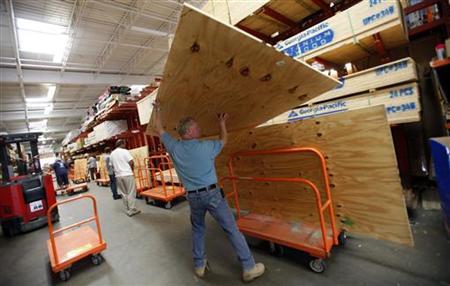
If support is what our spines need especially if your spine is super sensitive due to an injury or disc issue, could sleeping on the hard floor work? I was reluctant to try this until I ran into another holistic back pain healer and he was talking about how he “resets” his spines alignment by making a bed on the hard floor and sleeping there for about a week every few months.
I was sold and the next day I had made a bed on the floor with nothing more then a blanket to lay on, blanket to cover me and my pillow.
This next part is important.
When sleeping on the floor you have to make some adjustments to you’re sleeping arrangement to give you the proper support.
A few things to consider with your sleeping position:
- Have enough pillow to support your head. This may require two pillows just be in a neutral position.
- If you sleep on your side you may need to adjust your position a bit and use a rolled up towel for your waist area to help support the natural curve in your spine. This takes experimenting and adjustments as you go.
- Use a pillow between your legs if your a side sleeper or under your knees if you sleep on your back.
- It’s all about adjusting to find the best support and comfort possible so that you can decrease the irritation and ultimately reduce the sensitivity in your lower back.
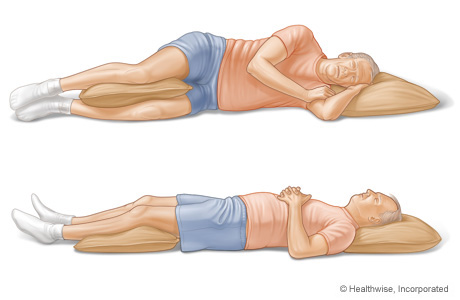
Remember.
This floor sleeping technique is a short term “adjustment” technique. It’s something that I still use to this day if I am going through some kind of flare-up or my back seems to be super sensitive in the morning for some reason. By doing this I am always able to reduce the inflammation and irritation I experience in my back and can return to normal sleeping arrangements within a few days. If your going to use this technique be sure to address your bed. Sleeping on the floor then going into a beat-up, sagging mattress will only create a cycle that will get you nowhere. Fix your bed then use the floor sleeping technique to help bring you to a less inflamed state.
Best sleeping positions to reduce morning back pain.
It’s all about the position.
I’m quickly going to go over the three most common sleeping positions and why you should stop them immediately or simply make a few adjustments to reduce your morning back pain
Anti-Morning Back Pain Position 1: Side Sleeper
This is my personal position of choice. Don’t let this position fool you though. It can really jack you up if you’re not careful. Take these few points into consideration.
- Side sleeping without a properly aligned neck and spine can still leave you with a lot of morning back pain. Use a pillow (I personally use this coconut bliss pillow. It’s basically like a Tempurpedic pillow but better. Just give it time to break in)that will support the front and back of your head. A lot of pillows are simply too small and allow the head to drift forward or back.
- Be sure your knees are not bent too aggressively. The higher your knees are the more you lower back will be stretched which could really put you in a stiff place come morning.
- Watch out for having your legs too straight. Just like having them too bent, having them too straight can put your lower back into an overly extended position. Leaving your TL Junction (Where the thoracic and lumbar portions of your spine meet) smoked come morning.
- Play around with your leg position when on your side. Just like finding a neutral position when your standing you can do the same while you sleep.
- On an old beat-up mattress the sag that is created from the body indention is what puts a lot of shear stress on the lower back joints and hips. This is where extra cushion or layers may need to be added to the support needed.
The Side Sleepers 3 Pillow System
To beat morning back pain I use this system just about every night. It’s a way I lock myself into a good position.
Pillow 1: I use for under my head. I have been through a lot of pillows to find the best one. The main goal is to have the pillow support your head and keep your neck in a neutral position.
Pillow 2: The pillow that you hug. I try to cover all the bases so that I really don’t have a reason to wake up and have the urge to search for the next comfortable position. Having a pillow that I hold usually keeps me planted on the side I started on.
Pillow 3: The pillow for between the legs. This is the number one reason side sleepers fail. They don’t have the knee pillow. Without the pillow I have heard numerous complaints about peoples backs still hurting or hips feeling tight or not being able to get comfortable. Use the pillow and thank me later.
Anti-Morning Back Pain Position 2: The Back Sleeper
Whether or not the back sleeping technique is going to reduce your morning back pain will be something you learn from experimenting. Typically, sleeping on your back promotes snoring and misalignment of the spine unless you have the right support and a solid mattress. The best thing for you to do is use this sleeping position on the floor first to see if the added support from the pillows and hard surface will keep you in a comfortable position. From there move to the bed and you can grade how supportive your mattress really is.
I personally don’t like it.
For me I have pain in extension along with tight hip flexors. Sleeping on my back forces my pelvis to rotate forward putting pressure on my lower back. On top of that I always end up on my side so I spend more time awake getting back into a back sleeping posture.
See if sleeping on your back helps with your morning back pain!
To make your experience the best possible be sure to have these tips covered.
- Don’t use a larger pillow for your head when sleeping on your back. Go for the flattest pillow you have. Remember, while sleeping you want your spine properly aligned so it can heal. When sleeping on your back, it’s easy to use one of your original pillows but that will force your neck in a forward flexed position which isn’t natural and will result in tense muscles and an even more forward slouched position when awake.
- Pay attention to contact points: Your upper back, butt and heels are the three main contact points for this position. Your goal is to support the joints above and below those three contact points. You can do this by using a larger pillow under your knees and a flat pillow under your head. This will help allow your lower back to relax and take your hip out of that forward tilted position.
- If you’re experiencing pain while on your back you can test to see if tight hip muscles are the culprit. You do this by bringing your knees up to a 90-degree angle. If this brings relief, odds are you have over tight hip flexors. Use the large pillow trick to find immediate relief.
Anti-Morning Back Pain Sleeping Position 3: The belly sleeper
I’m going to be honest.
I don’t know a single person dealing with back pain that finds sleeping on their belly to bring relief for morning back pain.
This is the most painful position for me but keep in mind that my pain triggers and injury may be different from you. If your only issue is disc herniation’s, this position could bring relief after a few minutes. Again, just because it doesn’t work for me doesn’t mean it won’t for you. Try it out and see for yourself. You will know right away if it works for you. Do not grit through pain for the next few days in hopes that it will feel better. No, stop if it hurts.
Your end goal is still to find a position that will allow you to sleep comfortably and support the natural curve of your spine. Someone experiencing pain while on their belly could be extension intolerant. If this is you, experiment with placing a small pillow under you’re belly or hip area to bring the spine back into alignment. Remember don’t force this position. If it doesn’t bring relief then ditch it.
Wrapping up:
There is a way that works for me 9 times out of 10 but that my not be the case for you. Try each position out and use every technique you see in this article. From the floor sleeping to the pillow support it is all apart of piecing together the perfect plan to reduce your morning back pain. The end goal is to reduce your pain without the use of drugs or some doctor cutting you open making something worse. Give it a try! Remember, all the products that I have linked up are affiliate links. I would only suggest something that I have personally used and have found relief from.
Let me know in the comment section below! Which sleeping position is the most painful for you?
Thanks for the support!
To your relentless pursuit of a drug and surgery-free pain management plan,
William

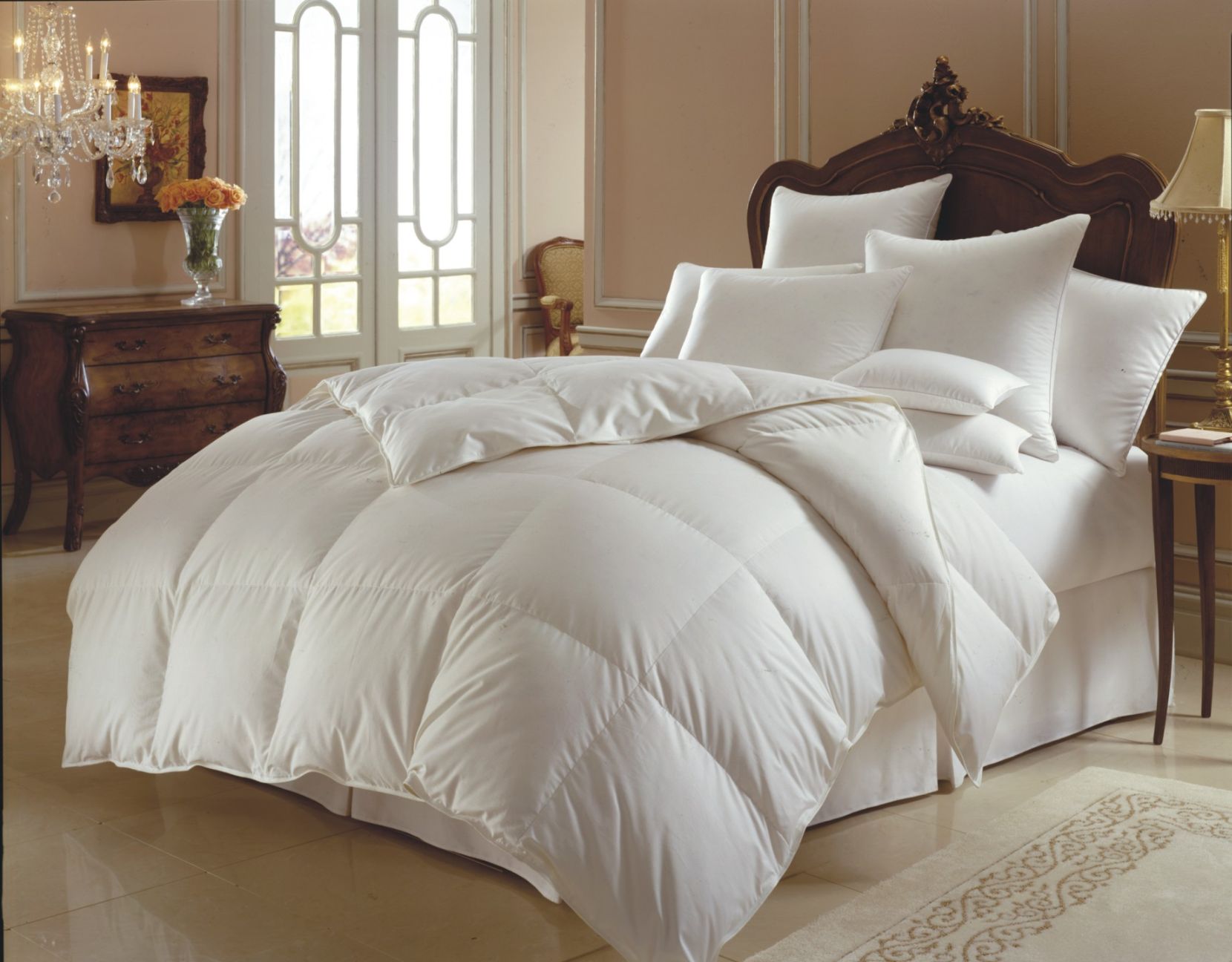
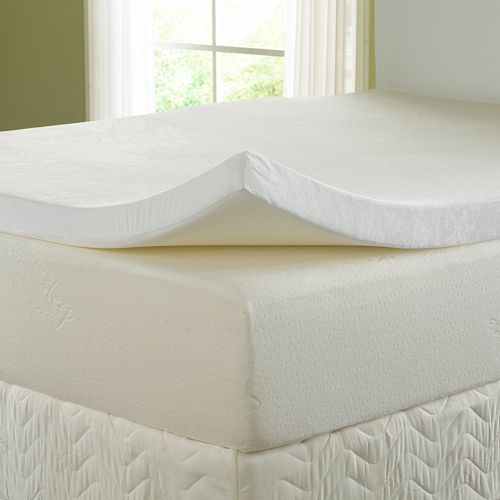

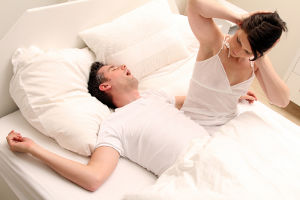


Hi, I had a level 3 fusion 2 yrs ago,L2 through L5,due to a car accident. I had lost the use of my right leg, due to severe pinched nerves, and was starting to loose use of my right arm. The surgery was successful, however, I have 2 rods and 7 screws. But now I suffer from CONSTANT, SEVERE, DIBILITATING, spasms, which now I’m piling on the weight, because I can not do anything. And I mean absolutely nothing. I can not go for a walk, or stretch,I can barley bathe, and I just turned 50. Before the accident, I was a marathon runner, and dance instructor, I have my degree in ballet. I’ve tried absolutely everything, including praying that I would not wake up at all in the morning. Is there any help for me to combat these viscous, debilitating spasms. I live to excersize,and I’ve been sinking inside myself for 2 yrs.
It sounds like you are helping people most with current back pain.
I am eight weeks post op after having a PLIF surgery. I am walking everyday but need to be on a low impact exercise program for stretching and core strengthening. I have tried to find something specifically for my Rehab purposes. Something not involving bending or twisting. Do you offer anything like this?
Hey Darla!
I will shoot you an email!
William
Thanks for the tips. A whole year I slept on my new memmory foam mattress without issues. Then I did something to my back and had severe back pain for months, it slowly got better, but still have morning back pain, not as bad as it was where I had to crawl for at least 15 min. But it is painfull and hard to get dressed. Then I had to sleep om my couch for a week and noticed the pain in the morning is nearly gone !! I sleep like crap on the couch, but worth not having the pain
And I sleep like a rock om my mattres but for some slight back ache … Should I toss the mattress? lol
The test dummy inside of me wants you to do more experimenting first. I would look into why your lower back doesn’t hurt as bad on the couch. Is the couch stiffer? Where do the cracks in the couch cushions lay compared to your pressure points and spine? Why do you toss and turn and what about the couch keeps waking you up? This info will help you figure out what mattress is best for you.
I would also do an experiment with sleeping on the hard floor. Make sure your neck and pressure points are supported by pillows you can hug and keek you tucked in but having the flat/hard surface is what A lot of people have used to “reset” themselves.
Hope this helps. Keep me posted!
William
What kind of knee pillow would you recommend for side sleepers?
What kind of pillow supports front AND back of head?
Any thoughts on the MY PILLOW?
Hey Jael!
I have experimented with different sizes before and the biggest difference that made the most impact was the size of the pillow. If its too big it doesn’t feel right and usually ends up working its way out between your legs. I typically have found flat pillows to be the best. What I haven’t done yet is get one of those full body pillows. That may help a lot with the pillow getting away from you as you toss and turn in your sleep.
I have never tried the my pillow mainly because I don’t really want to have to fold or gather the material in the pillow to provide the support. I prefer to have a pillow that no matter how I am laying (I sleep on my side) the pillows support system is already in place. I don’t want to have to sleep on my arm or make any adjustments at all. I am always open to try new things but I wouldn’t purchase the pillow just to try it.
I personally use a Coconut Bliss pillow which is the best I have used for side sleeping.
My back has been hurting all the time lately, especially when I wake up. Maybe I have been gotten used to using bad posture when I am sleeping. It is smart advice to focus on correcting the position you sleep in rather than getting a new mattress to fix the problem. I will try falling asleep in these three poses to see if one of them makes my back feel better in the morning.
Hey Kairi,
It’s sometimes a combination of both. Sleep position is key to relieving pain in most people. If sleeping on your back or belly causes pain but sleeping on your side doesn’t than you know where to spend most of your efforts. If your mattress is older I would look at experimenting with different ways you can increase the support whether that’s by adding stiff blankets to the top or adding a firm foam topper. If you can afford a new mattress go for it but if you need time to save up then those are the best options.
Hope this helps!
William